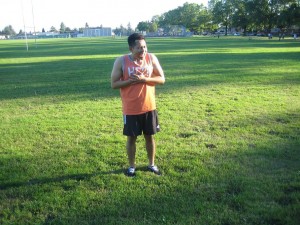It is important to note that angina is type of chest pain that is similar to a pressure or squeezing in the chest area. Angina develops once there is not enough blood flow and oxygen into the heart muscle. Always bear in mind that angina can occur regularly or unexpectedly. In most cases, individuals can suffer from angina during activity or stress. Nevertheless, there are many who suffer from angina on a consistent basis after eating food, especially a large meal. If you want to learn more about angina, read here.
What is angina?
Angina is the pain experienced in the chest area when the heart is not receiving enough oxygen. This can be due to the hardening or clogged up arteries. This commonly occurs when the individual engages in an activity or suffering from emotional stress. The pain can be described as a pressure, squeezing or heavy sensation in the chest. It typically vanishes when the individual stops activity or when stress is no longer present. In case the pain does not reduce, it is best to seek medical care right away.

Connection of angina and eating
It is important to note that angina and eating have been studied for many years. It has been shown that when an individual is eating, the heart rate and the amount of blood the heart pumps to the entire body increases. Once the heart has a certain degree of artery disease, the excess demand can reduce the flow of blood. The higher the energy content present in the food, the harder the heart has to work. The increase in the cardiac demand will lead to angina pain.
Angina and certain foods
Since angina is an indication of heart disease, the foods that the individual chooses has a large impact. The consumption of foods that are rich in fat and cholesterol will lead to frequent angina pain. The individual should consume foods that are low in salt and packed with nutrients such as vegetables, fruits, whole grains and high fiber foods. Take note that these foods will have a lower cardiac demand can cause less pain.
How to control the angina
It is important to note that there are two major types of angina that you should be familiar with – stable and unstable. By knowing which type the individual has, it is essential to determine the appropriate treatment. Stable angina typically occurs with eating, stress and activity in which the occurrence can be predicted. As for unstable angina, it occurs at any given time even while at rest and usually random.
Always remember that both types can be controlled by consuming healthy, small meals as well as staying relaxed along with deep breathing and exercise. In case lifestyle changes do not work, the doctor will prescribe medications to help control or even reduce the pain.
